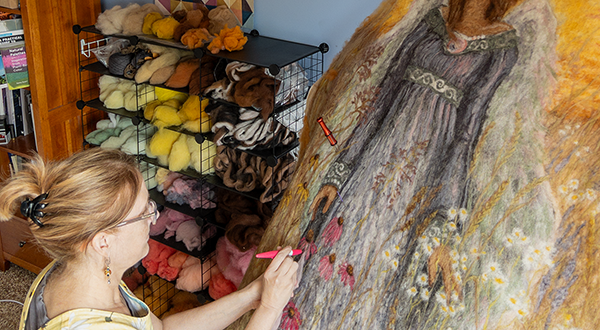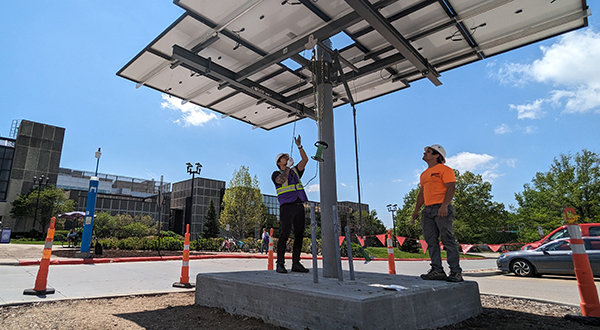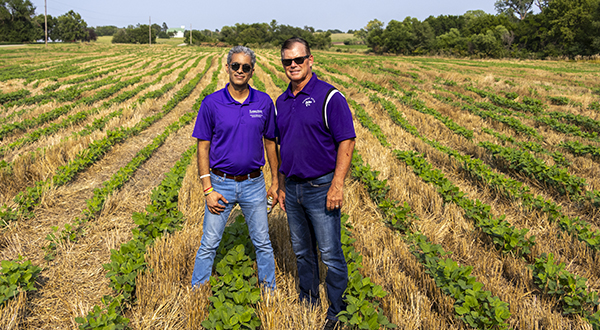By design: Purposeful planning yields emotional connections to the spot that we love full well
Monday, Sept. 30, 2024 — By Vikki Watson, K-State News and Communications Services
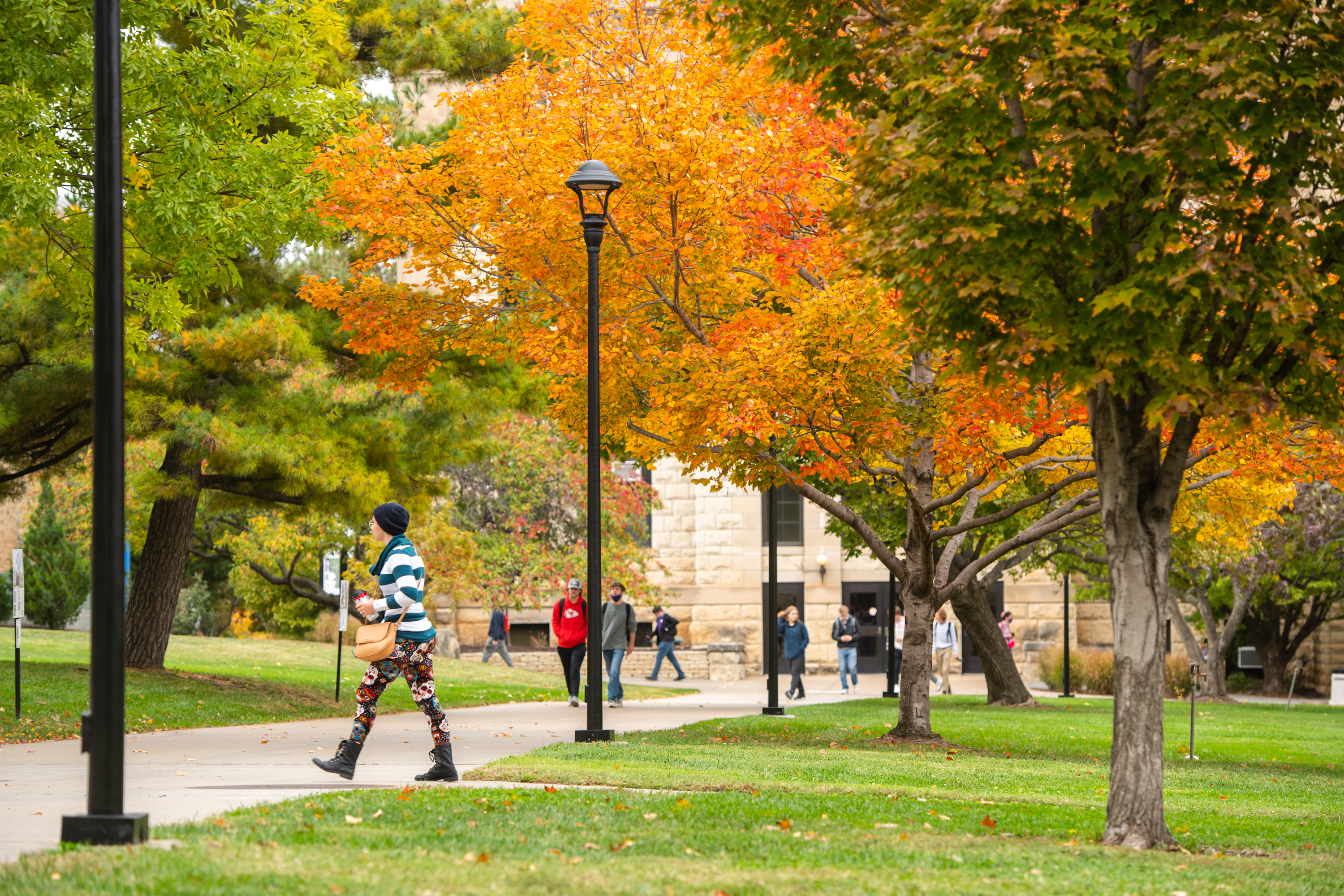
K-State's Campus Master Plan provides a blueprint for transforming the physical spaces the K-State community inhabits while preserving iconic spots that create emotional connections.
Before nearly every home football game, K-State graduate Lisa Robertson takes a literal walk down memory lane across the Manhattan campus.
"I park my car at McCain, walk through the Union, go back to the quad, walk through campus and go up to the stadium," she said. "You can see everything that has changed. From the time I start to the time I'm done, I have the most overwhelming sense of happiness. Then I'll call my mom and say, 'Thank you for sending me to K-State.'"
Robertson's emotional treks across campus are especially noteworthy when considering how long she's been doing it. It's been 39 years since Robertson graduated with a degree in journalism and mass communications, and much has happened since: a law degree, marriage, four kids — three of whom also graduated from K-State — and a successful law career. She is currently the city attorney in St. Joseph, Missouri, just down the road from Wathena, where Robertson and her sister, Angie — also a K-State grad — grew up and where her mother still lives.
"I have so many fond memories of K-State," said Robertson, who lives in Topeka with her husband, Charley. "The people are friendly and kind in Manhattan and on campus. It's genuine. And I thought the campus was gorgeous. It was open and easy to navigate. I loved it.
"And I still love it."
A deliberate process
The positive campus experience that Robertson and so many other K-Staters share is not by accident. Yes, it's grounded in K-State friendliness, authenticity and a good dose of down-to-earth Midwestern spirit, but it's developed and cultivated throughout the years by a thoughtful, intentional Campus Master Plan that builds upon K-State's heritage while ensuring it meets the needs and aspirations of the university for generations to come.
That plan, which is revised about every 10 years and is being redeveloped now, covers everything from facilities, space use, infrastructure and accessibility to security, transportation, student experience and more on all three campuses in Manhattan, Salina and Olathe. It supports K-State's ambitious Next-Gen K-State strategic plan and the university's goals to invest in modern infrastructure that attracts talent and enables cutting-edge research. A final plan will roll out in 2025.
"The evolution of the Manhattan campus has been strategic and will continue to be so as we gauge the next decade ahead," said Casey Lauer, associate vice president of facilities. "The K-State experience is largely embodied by the appeal of our physical campus. The edges are defined yet integrated into the community, and the buildings, spacing, trees and green spaces are scaled and purposeful.
"Not many universities can match what we have — our land-grant heritage anchored in the late 1800s balanced with a sprinkling of beautiful modern buildings. It's a special place."
A witness to progress and tradition
Mary Molt, assistant professor and associate director for Housing and Dining Services, has seen a few campus master plans and their impact over the years. She's been at K-State for 51 years, working for six of K-State's 15 presidents and watching K-State grow and evolve over the decades.
She walked the Manhattan campus long before Bluemont and Wefald halls, Bramlage Coliseum, the Chester E. Peters Recreation Complex, a renovated K-State Student Union and the modernization of the Jardine Apartment Complex, just to name a few. She also remembers the raucous Ahearn Field House, the residence halls when they had no suites or individual bathrooms, the dining halls when they had only a few dining concepts and when Farrell — not Hale — Library stood in the middle of campus.
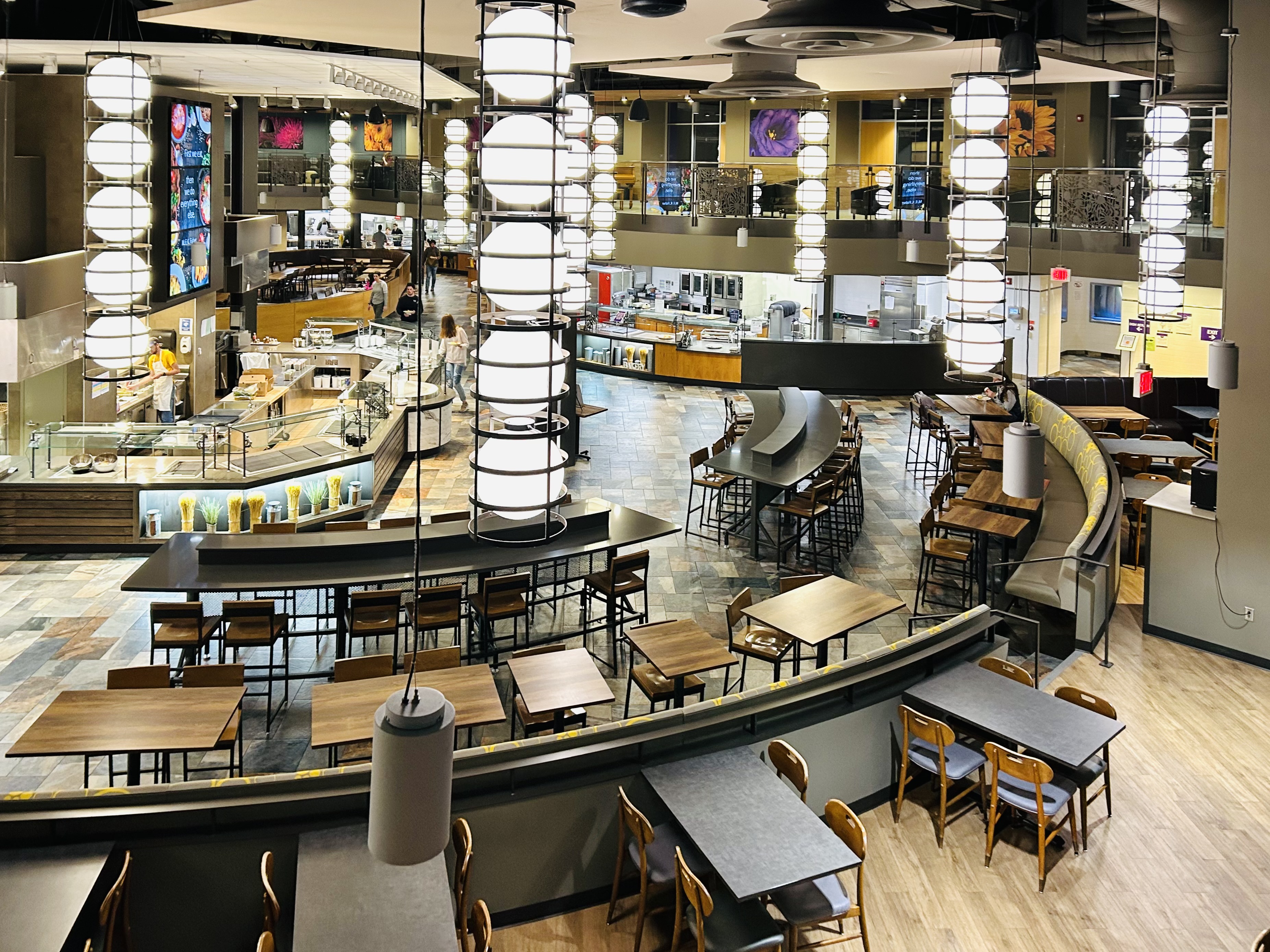
"The campus has changed a lot over the years," said Molt, who obtained her doctoral degree in human ecology with specialization in hotel, restaurant and institution management and dietetics at K-State. "Take a look at all the new buildings and the growth to the north of Claflin Road. Then there's Jardine. The Beach Museum of Art. The Alumni Center. And so many more."
But one thing has never changed in her five decades on campus, Molt said.
"It's still student-centered," she said. "The objective for every area is to educate students and make them successful. Everything is about the student. There's always that underlying thread of 'how will this positively impact the students?' We're always thinking about the students when building, redesigning and remodeling."
A chance to shape the future
Lauer is proud of the role that students, faculty, staff, alumni and the local communities have played in the evolution of K-State's campuses. This year's Campus Master Plan is no exception. It engages faculty, staff, alumni and the community through interactive surveys and town hall meetings across all three campuses. More than 8,650 people have completed master plan surveys to date, and 24 stakeholder meetings have been held.
From that input, five themes, or planning principles, emerged: enhance the K-State experience, create resilient campuses, transform learning environments, expand research and improve connectivity.
The next opportunity for another round of feedback will take place the week of Oct. 21, when town halls will gather input about the five planning principles. Feedback will also be gathered online.
• Manhattan: 5:30-7 p.m. Tuesday, Oct. 22, in 1088 Business Building
• Virtual: Noon-1 p.m. and 6-7 p.m. Wednesday, Oct. 23, on Zoom
• Olathe: 1-3 p.m. Thursday, Oct. 24, in Forum Hall at the K-State Student Union
Details about a town hall for the Salina campus will be announced soon.
"It's a rare and tremendous opportunity to be involved in the future of our campuses," Lauer said. "K-State is a special place, and you have an opportunity to shape its future."
